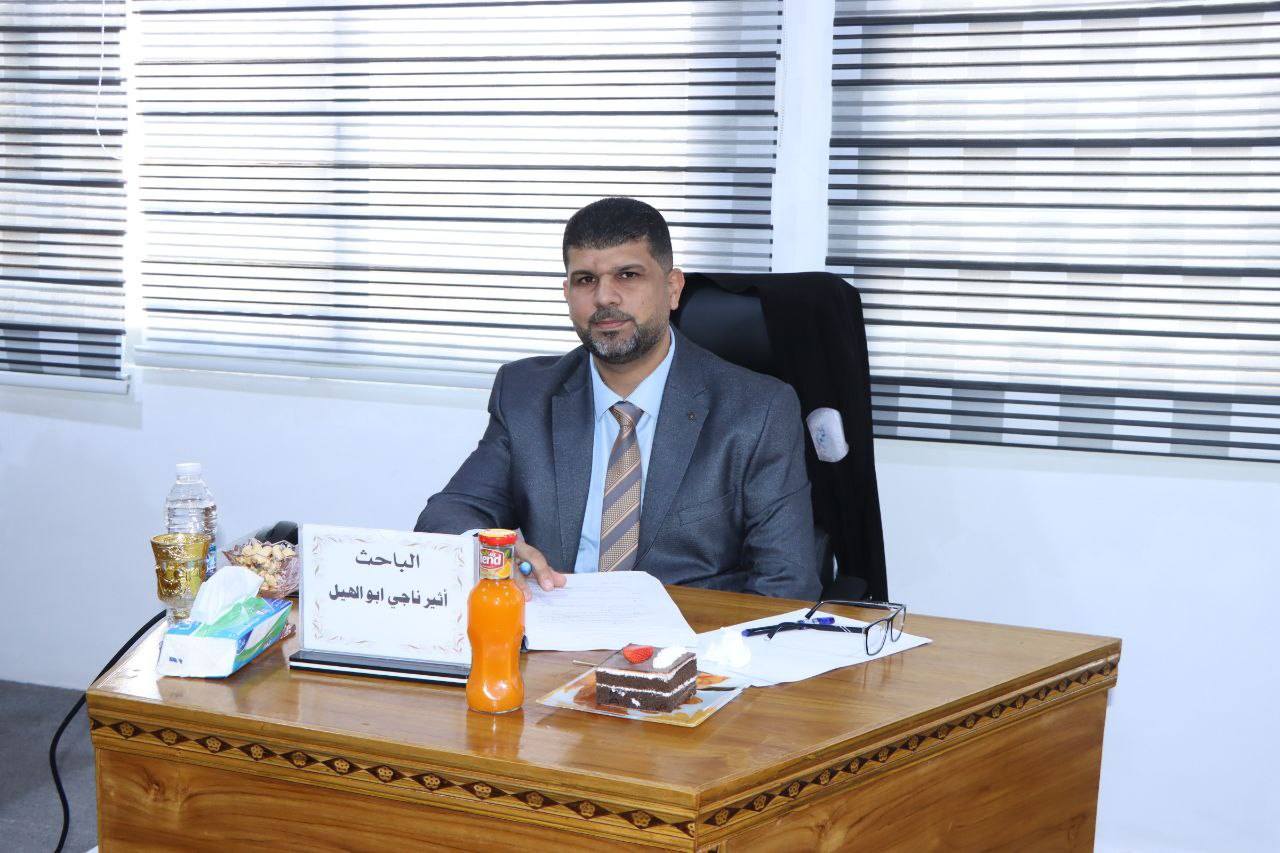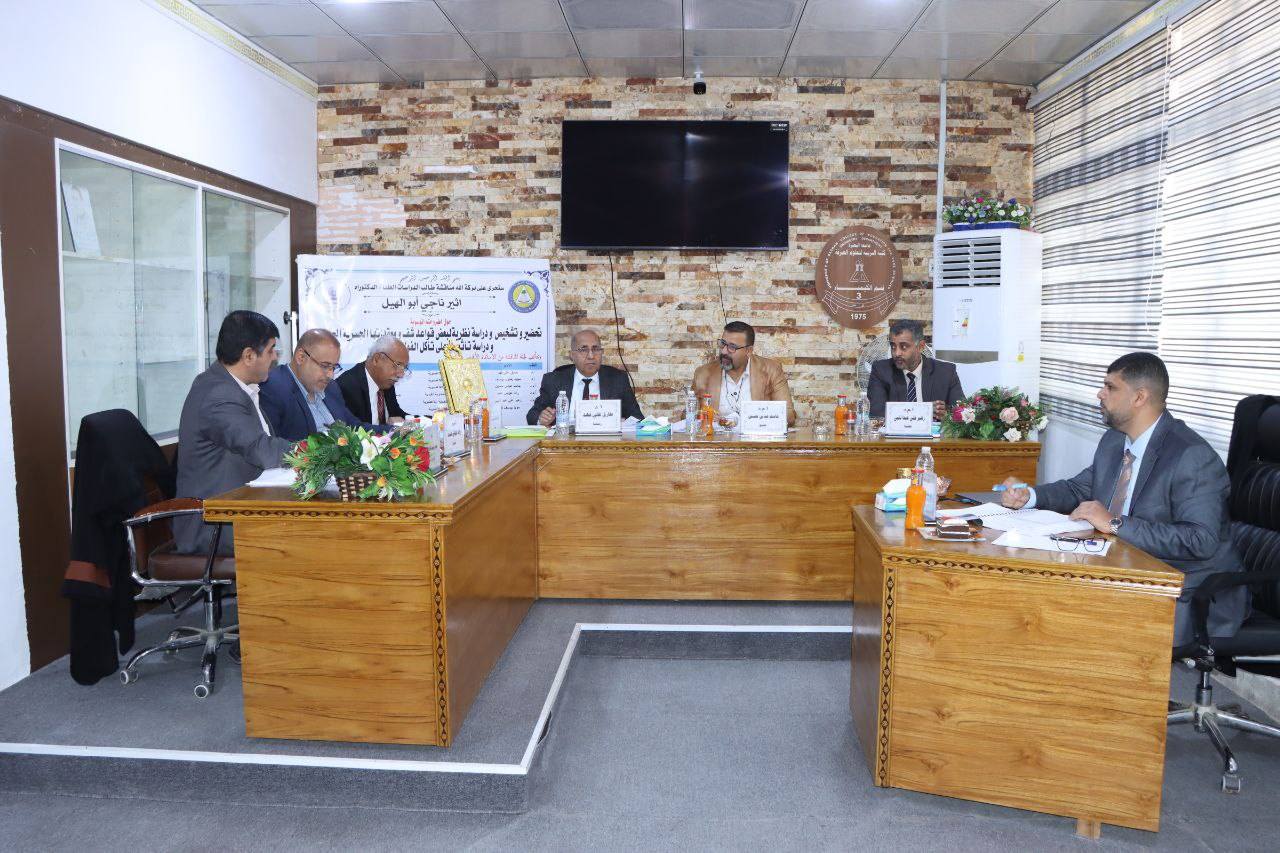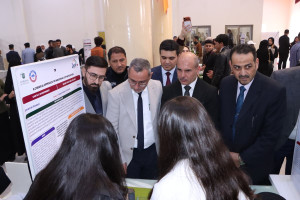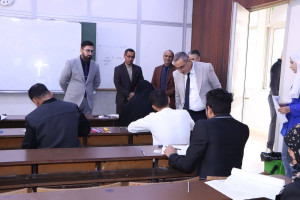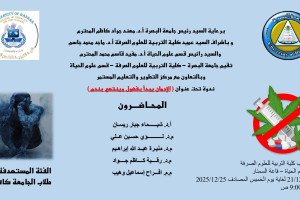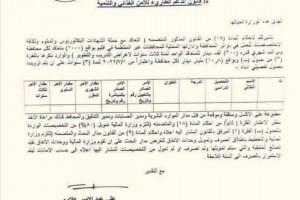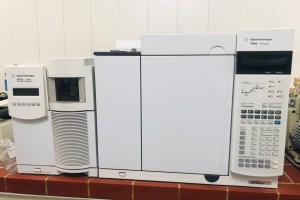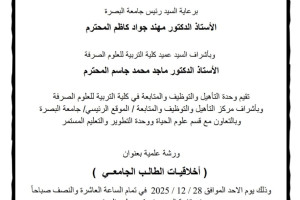
The College of Education for Pure Sciences, Department of Chemistry, has researched a doctoral thesis on the preparation, diagnosis and theoretical study of some Schiff bases and their new bridge complexes and the study of their effect on the corrosion of carbon steel. The thesis presented by the researcher (Atheer Naji Abu Al-Hail)
The study included the use of prepared ligands as corrosion inhibitors for carbon steel alloy type N 80 in an acidic medium of 1 M of aqueous solution of HCl acid and at temperatures of 298, 308, 318 K and at different concentrations
Using the complementary polarization method,
The thesis aims
To prepare ten new ligands of the Schiff base type containing two azomethine groups, these ligands were characterized using several methods such as elemental analysis (CHN), infrared spectrum
(FT-IR), proton and carbon-13 nuclear magnetic resonance spectrum, mass spectrum (Mass)
(Spectrum), and visible-ultraviolet spectrum.
After that, twenty bridge complexes containing Schiff bases were prepared, by reacting the prepared Schiff base ligands with the complexes of the dimetallic tetrathiocyanate at a ratio of Molarity 1:1. The prepared complexes were characterized by elemental analysis, infrared spectrum, thermogravimetric analysis (TGA), UV-visible spectrum, magnetic susceptibility, flame atomic emission spectroscopy (ICP) and molar conductivity. The results showed that the values of corrosion current density Icorr for carbon steel in the presence of inhibitors were lower than their values in the absence of inhibitors, and adding inhibitors to the acidic solution at a range of concentrations under study reduced the corrosion current density for each temperature, and generally increased with increasing temperature for a single concentration. As for the inhibition efficiency, it was found that it increased with increasing inhibitor concentration for each temperature separately, and it was also noted that the inhibition efficiency for all inhibitors increased with increasing temperature. The study also included a theoretical study of the Schiff bases prepared using computer chemistry programs, where the highest energy occupied molecular orbital (EHOMO), the lowest energy unoccupied molecular orbital (ELUMO), the electronegativity (Electronegativity), the chemical hardness (Chemica
Number of transferred electrons), the softness (hardness) of electrons (ΔN), and the ionization potential (Ionization potential) were found. Through this, the possibility of using Schiff bases as corrosion inhibitors was enhanced.
